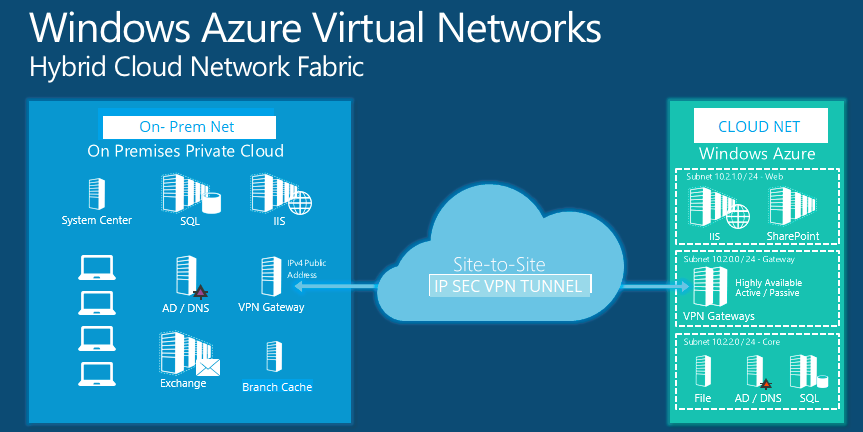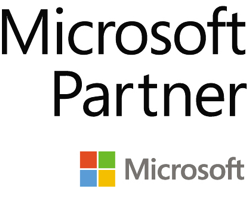
Hybrid Networking: Agility for your Cloud Infrastructure
A hybrid cloud network is an architecture that connects private clouds, public clouds and on-premises data centers while maintaining the same integration, connectivity, management and security and allowing data and applications to be shared across all environments.
Hybrid cloud networking gives businesses the ability to seamlessly scale their on-premises infrastructure up to the public cloud to handle any overflow without giving third-party datacenters access to the entirety of their data. Hybrid cloud networks rely on point-to-point (Express Route) or VPNs to connect data centers, on-premises IT and cloud providers to provide dedicated, consistent, private networking between data centers and any Azure region.
Benefits of hybrid networking Include:
Unified Communication: Connecting to public cloud resources seamlessly and having similar network control that can adapt to business needs. To achieve this point-to-point (Express Route) or an IPsec-based VPN connection between the clouds should be considered. This encrypts the data and makes the connection more secure and resistant to taps and attacks.
Network Security & Cloud Security: While data may travel only between the firewalls, now it is stepping out over a network, potentially among multiple cloud locations. Keeping this information safe in transit and dealing with access-control issues will be critical. Match security and compliance standards across the network. Follow the OWASP (Open Web Application Security Project) core rule set to identify vulnerabilities and attacks. Consider working with a cloud access security broker (CASB) to gain full visibility and control into security logs for better compliance governance.
Data Protection & Data Loss Prevention: Managing recovery plans become more complex in a hybrid networking environment. Map disaster scenarios prior to getting locked in for redundancy and pay close attention to data classification, data access protection and data transit protection.
Next-Gen Firewalls: Next-generation firewalls (NGFWs) integrate three key assets: firewall capabilities, an intrusion prevention system (IPS) and application control. NGFWs bring additional context to the firewall’s decision-making capabilities by providing it with the ability to understand the details of the web application traffic passing through it and blocking traffic that could potentially exploit vulnerabilities.
Log Management: Intelligent reporting and activity visualization using Azure network watcher and Azure Log analytics.
So, when creating a hybrid cloud network architecture, understanding data connectivity requirements— the volume of data, speed, security and network performance become crucial components for achieving your business goals.
For more details of information on Hybrid Cloud, contact an SNP representative.





